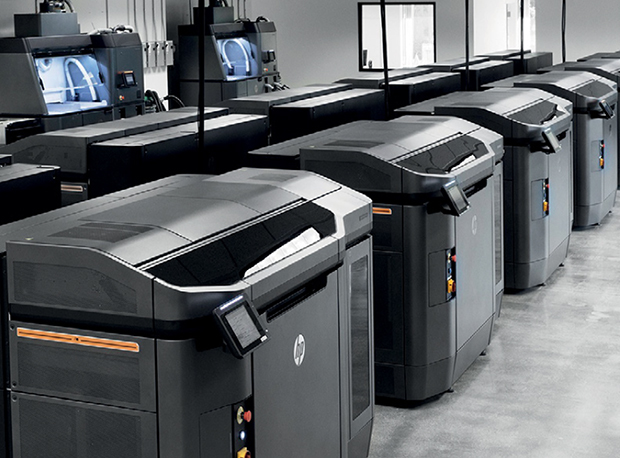3D Print Engineering-Grade Parts on an Industrial Scale

HP Jet Fusion 3D 4210 Printing Solution offers improved overall efficiency compared with previous models along with a new processing station that handles higher material volumes. The effect, according to HP, is the ability to mass-produce from 700 to 1,000 engineering-grade parts per week at the industry’s lowest cost-per-part. Image courtesy of HP Inc.
Latest News
November 14, 2017
HP has been making waves with its Jet Fusion line of 3D printing solutions. They show no signs of stopping. Last week, they announced a new large-scale, industrial 3D manufacturing system. Called the HP Jet Fusion 3D 4210 Printing Solution, it will be available in March 2018.
All very interesting, you say. But what’s this Jet Fusion technology all about? How does it work? What’s in it for me? Watch this 5-minute video. It explains how these 3D printers operate from the build and the material angles. It’s fascinating technology.
 HP Jet Fusion 3D 4210 Printing Solution offers improved overall efficiency compared with previous models along with a new processing station that handles higher material volumes. The effect, according to HP, is the ability to mass-produce from 700 to 1,000 engineering-grade parts per week at the industry’s lowest cost-per-part. Image courtesy of HP Inc.
HP Jet Fusion 3D 4210 Printing Solution offers improved overall efficiency compared with previous models along with a new processing station that handles higher material volumes. The effect, according to HP, is the ability to mass-produce from 700 to 1,000 engineering-grade parts per week at the industry’s lowest cost-per-part. Image courtesy of HP Inc.Then, watch this video. It’s a tongue-in-cheek demo that shows your imagination is the limit with these rigs. A single chain link and an old Toyota Avalon star in it.
But back to the 3D 4210 system. What does “large-scale industrial 3D manufacturing” mean? According to HP, it means 700-1,000 engineering-grade parts per workweek through what is essentially continuous operation.
HP enables you to achieve this in a number of ways, particularly improved overall efficiency compared with earlier models and a new processing station that handles higher material volumes. Also, material costs have been lowered. In other words, by using the HP Jet Fusion 3D 4210, you could mass-produce engineering-grade yet lower cost parts.
At the same time the Fusion 3D 4210 was announced, HP also reported that over the next few months three new thermoplastic 3D printing materials—HP 3D High Reusability PA (polyamide) 11, HP 3D High Reusability PA 12 Glass Beads and HP 3D High Reusability Polypropylene—will roll out. The materials were developed at HP’s 3D Open Materials and Applications Labs.
The PA 11 material is intended for functional parts needing impact resistance and ductility, such as prostheses, snap fits and living hinges. The PA 12 is a glass-bead reinforced material for applications requiring functional parts with dimensional stability, repeatability and high stiffness like enclosures, molds and tooling. The high reusability polypropylene is described as a lightweight, durable and low-cost material offering capabilities like enhanced flexibility, chemical resistance and watertightness.
By the way, HP says that if you have a Jet Fusion already, you can preorder the 3D 4210 Printing Solution upgrade today. If you’re looking at a Jet Fusion system, you can acquire it now with the option to preorder the 3D 4210 system upgrade. Just want to learn more? Click here for all things HP Jet Fusion, including the product lineup, materials and what’s ahead.
Thanks, Pal. – Lockwood
Anthony J. Lockwood
Editor at Large, DE
Subscribe to our FREE magazine, FREE email newsletters or both!
Latest News
About the Author
Anthony J. Lockwood is Digital Engineering’s founding editor. He is now retired. Contact him via [email protected].
Follow DE







